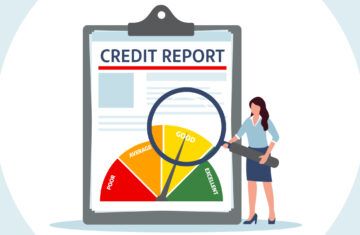Investing in the stock market can be intimidating, especially if you’re completely new to it. There’s so much information out there, and it seems like everyone has an opinion on what you should buy or sell. That’s why we put together this beginner’s guide to using cryptocurrency as your first step into the world of investing.
WHAT IS CRYPTOCURRENCY?
If you haven’t heard of cryptocurrency yet, then let me tell you…it’s about to change everything. It’s a digital currency that uses encryption for secure financial transactions over the internet. Think of it like cash online! But unlike traditional currencies (like dollars), which are controlled by governments and banks, cryptocurrency is decentralized. That means no one person or institution controls it – instead, thousands of computers around the globe work together to keep track of it all.
There are lots of different types of cryptocurrencies available today, but Bitcoin was the very first one ever created back in 2009. Since then, many others have popped up including Ethereum, Litecoin, Dogecoin and more recently Monero among others. Each has its own unique features and advantages. Some people think they could replace traditional money entirely while others believe they will just supplement our current systems with something better suited for certain tasks.
One thing is clear though: cryptocurrency has already made waves across industries such as banking/finance, supply chain management, healthcare records storage & retrieval and even entertainment industry payments (think Kickstarter). As technology continues advancing at breakneck speeds, who knows what other innovations might come along next? The possibilities truly seem endless when considering how blockchain technology (the underlying tech behind cryptocurrency) could revolutionize fields ranging from government services all the way down to real estate management.
Even Jim Cramer changes his stance on the controversial topic of crypto as he comments here in this article “You can’t kill it”
HOW DO I GET STARTED WITH CRYPTOCURRENCY?
To start investing in cryptocurrency, you need a few things: a computer or mobile device connected to the internet, some spare funds, and access to a reputable exchange where you can buy/trade/sell cryptocurrencies safely. Let’s go through each of these steps in detail below:
1. Get Access To An Exchange – An exchange allows users to trade their preferred cryptocurrencies against another asset such as fiat currencies (like USD), stable coins or other cryptos. If you want to get started right away without having too much trouble finding reliable exchanges yourself, Coinbase Pro is a great option since it offers both convenience and security at an affordable price point. However, it may not be suitable for advanced traders due to limited order options compared to more professional platforms. For example, Binance provides more variety and better liquidity than most exchanges but requires technical knowledge before you can successfully withdraw funds. Kraken also supports a wide range of assets and markets but requires identification verification before being able to make any trades. Another popular choice is Gemini because it’s based in New York City and holds state charters allowing them greater legal clarity regarding securities laws whereas other exchanges do not always comply with regulations. Finally, Robinhood Markets Inc., has announced plans to launch cryptocurrency trading soon, although details remain scarce at present time.
2. Set Up Your Account – Once you have selected an exchange, sign up for an account by providing personal information such as name, email address, phone number, mailing address, date of birth, etc. Be sure to read all terms and conditions carefully before agreeing to anything. You may also need proof of identity documents like driver’s license or passport depending on where you live. After completing registration process, wait until confirmation email arrives containing link(s) necessary complete setup process.
3. Verify Your Identity – Before depositing money onto an exchange platform, ensure that you verify your identity. This involves uploading copies of government-issued ID cards (such as passports) plus proof of address documents like utility bills/bank statements showing same address listed above. Depending upon country/region specific requirements, additional steps may include taking selfies holding up specified forms of photo IDs or scanning credit card front/back sides. Make sure to follow instructions exactly as stated; otherwise, delays could occur during the verification process.
4. Fund Your Wallet – Now that you’ve completed account setups and verified identities, fund your wallets with either fiat currency (e.g., USD) or cryptocurrencies from external sources. Most exchanges offer multiple payment methods including PayPal transfers, wire transfers, debit/credit cards, bank drafts, Skrill Moneybookers, Neteller, WebMoney, Qiwi wallets, Yandex Money, PerfectMoney and many others depending on location.
5. Choose Your Cryptocurrency – With your wallet funded, decide which cryptocurrency you wish to purchase. Popular choices include Bitcoin (BTC), Ethereum (ETH), Ripple (XRP), Litecoin (LTC), Dash (DASH), Bitcoin Cash (BCH), Cardano (ADA), Stellar (XML), NEO, GAS, Zcash (ZEC), Monero (XMR), EOS, TRON (TRX), VeChain Thorum (VTHOR), SALT Lending (SALT), Tezos (XTZ), Chainlink (LINK), Cosmos (ATOM), Polkadot (DOT), Solana (SOL) and many more besides. Keep in mind that prices fluctuate constantly so research thoroughly before making final decisions.
6. Place Orders – Now that you’ve decided which cryptocurrency best fits your needs, place orders accordingly. Depending on the type of exchange you joined earlier, you’ll typically find three main ways to execute trades: Market Order Book Trading Limits Fixed Price Purchase Orders. With Market Orders, simply specify total amount desired in units per cryptocurrency along with corresponding price limits if applicable. Alternatively, try setting limit orders with fixed amounts at specific price points as well. Lastly, consider placing stop loss orders designed to automatically sell off holdings once reach predefined thresholds.
7. Track Your Portfolio Performance – Once you’ve invested in cryptocurrencies, monitor performance regularly to see whether gains or losses occurred due to market volatility. Use tools provided by exchanges themselves or third party websites specializing in tracking data feeds for cryptocurrencies.
8. Consider Security Measures – Investing in cryptocurrencies comes with risks, especially when dealing with large sums of money. Therefore, take appropriate measures to protect yourself against potential threats like phishing attacks, hacking attempts and hardware failure. Store private keys securely offline whenever possible and update software frequently. Additionally, diversify holdings across multiple accounts on different exchanges to minimize risk further.
9. Educate Yourself – Remember that investing in cryptocurrency is similar to playing poker: sometimes luck plays a role but generally speaking, understanding odds improves chances of success significantly. Read articles, watch videos, attend conferences, subscribe to newsletters, join online communities and engage in conversations related to cryptocurrencies. Continuously learn more about topics such as blockchain development, token economics, smart contract programming languages, distributed ledger technologies and more. By staying informed, you increase your ability to identify opportunities while avoiding costly mistakes.
10. Have Fun – Finally, enjoy the experience of getting involved in cryptocurrency markets! Explore various projects built utilizing blockchain technology such as initial coin offerings (ICOs), decentralized applications (dApps), non-fungible tokens (NFTs) and more. Connect with others via social media networks dedicated exclusively to discussions surrounding cryptocurrencies. Learn about the latest developments within space including new legislation affecting cryptocurrencies globally. Take part in community events focused specifically around cryptocurrency education and adoption initiatives.
Above all else, remember that investing in cryptocurrency carries inherent risks associated with its highly unpredictable nature. Do not invest more than what you can comfortably afford losing. You should consider doing a consult with professionals before making major decisions involving cryptocurrencies.
Here is a list of popular cryptocurrency terms and definitions for you to refer to:
- Blockchain: A decentralized digital ledger technology used to record transactions across multiple computers in a secure and transparent manner.
- Bitcoin: The first and most well-known cryptocurrency, created by an anonymous person or group of people using the pseudonym Satoshi Nakamoto in 2009.
- Altcoin: Any cryptocurrency other than Bitcoin. Examples include Ethereum, Ripple, Litecoin, and many others.
- Wallet: A digital tool or application used to store, send, and receive cryptocurrencies. Wallets can be hardware-based (physical devices) or software-based (online platforms, desktop, or mobile apps).
- Cryptography: The practice and study of secure communication techniques that allow for the encryption and decryption of information. In the context of cryptocurrency, cryptography ensures secure transactions and data integrity.
- Mining: The process of validating and adding transactions to a blockchain ledger. Miners use powerful computers to solve complex mathematical puzzles, which requires significant computational power and energy consumption.
- Hash: A cryptographic function used to convert input data into a fixed-size string of characters. Hash functions are an essential component of blockchain technology, ensuring data integrity and security.
- Fork: A software or protocol update that introduces significant changes to a cryptocurrency’s codebase, resulting in a divergence from the original blockchain. Forks can be categorized as hard forks (permanent divergence) or soft forks (temporary divergence).
- ICO (Initial Coin Offering): An unregulated fundraising method used by cryptocurrency startups to raise capital by selling newly issued digital tokens to investors. Investors receive tokens in exchange for fiat currency or other cryptocurrencies.
- Exchange: A digital marketplace where users can buy, sell, and trade cryptocurrencies. Exchanges facilitate transactions between buyers and sellers, often charging fees for their services.
- Smart Contract: Self-executing contracts with the terms of the agreement directly written into code. Smart contracts run on blockchain networks and automatically execute when predefined conditions are met, without the need for intermediaries.
- Decentralized Finance (DeFi): An ecosystem of decentralized financial applications and protocols built on blockchain networks, aiming to provide financial services without the need for traditional intermediaries like banks.
- Wallet Address: A unique identifier used to send and receive cryptocurrencies. Wallet addresses are alphanumeric strings generated by wallets and serve as destinations for cryptocurrency transactions.
- Private Key: A secret cryptographic key that allows users to access and control their cryptocurrency holdings. Private keys are used to sign transactions and must be kept secure to prevent unauthorized access.
- Public Key: A cryptographic key derived from a user’s private key and used to generate wallet addresses. Public keys are shared publicly and allow others to verify transactions sent to a particular wallet address.
These are just a few of the commonly used terms and definitions in the world of cryptocurrency. The industry is dynamic and continuously evolving, so staying updated with new developments and terminology is essential for anyone interested in participating in the cryptocurrency market.




